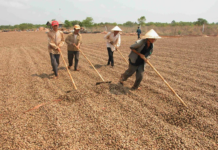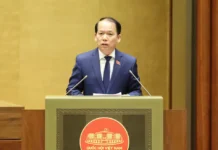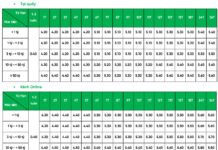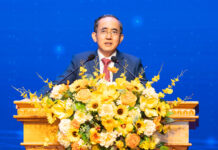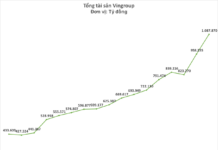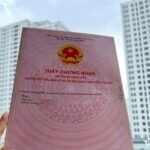
In 2024, Vietnam attracted over USD 31 billion in FDI, ranking among the top 15 developing countries in FDI inflows globally. (Photo: TTXVN)
|
Amidst global economic volatility, Vietnam is emerging as a rare “bright spot” in the region. The ambitious target of achieving a 10% GDP growth rate by 2026—once considered bold—is now increasingly viewed by international organizations as entirely feasible, provided institutional reforms and economic restructuring efforts are implemented effectively.
Growth Momentum
Leading global financial institutions have consistently revised upward their forecasts for Vietnam’s economic resilience.
Both the World Bank (WB) and the Asian Development Bank (ADB) agree that Vietnam has successfully maintained a balance between high growth and macroeconomic stability—a feat few emerging economies can achieve.
Meanwhile, major banks such as HSBC, Standard Chartered, and UOB have collectively raised their 2025 growth projections for Vietnam to approximately 7.5%, reflecting international investors’ confidence in the economy’s resilience and recovery following a global downturn.
The third-quarter 2025 GDP growth rate surpassed 8%, the highest since 2011, underscoring Vietnam’s significant economic transformation.
According to Standard Chartered, Vietnam is “transitioning from a goods-exporting economy to one focused on value-added and financial services,” enhancing its access to long-term international capital flows—a critical foundation for achieving double-digit growth.
Institutional Breakthroughs to Unleash Resources
To capitalize on the “window of opportunity” as global capital shifts toward Asia, Vietnam has embarked on a strategic initiative: establishing the International Financial Center (IFC), a new institutional framework designed to mobilize global resources for economic development.

Launch ceremony of the Saigon Marina IFC International Financial Center Tower. (Photo: Hứa Chung/TTXVN)
|
On November 4th, concluding the Government’s specialized meeting on eight decrees guiding the implementation of National Assembly Resolution No. 222/2025/QH15 on the International Financial Center in Vietnam, Prime Minister Phạm Minh Chính emphasized that policies for the IFC must be groundbreaking, superior, and adhere to principles of openness, transparency, and maximum convenience for all participants.
The establishment of the IFC in Vietnam has been identified by the Party and State as a key breakthrough to unlock resources, promote growth model transformation, restructure the economy, attract foreign investment, and enhance national productivity, efficiency, and competitiveness.
Under Resolution 222/2025/QH15, Vietnam plans to develop two financial centers in Ho Chi Minh City and Da Nang, aiming to rank among the top 75 global financial centers by 2035 and the top 20 by 2045, according to the Global Financial Centres Index (GFCI).
In Ho Chi Minh City, the local government plans to invest USD 7 billion in IFC infrastructure, focusing on banking, fund management, fintech, and commodity derivatives trading.
The 55-story Saigon Marina Tower—the IFC’s headquarters—is expected to commence operations in 2026 and reach full capacity by 2030.
Meanwhile, the Da Nang IFC is positioned as a hub for green finance and digital assets, with a special administrative mechanism implemented since September 2025. It aims to raise approximately USD 2 billion for digital infrastructure and financial technology investments.
Jochen Biedermann, Director of the World Alliance of International Financial Centers (WAIFC), noted that this “dual-hub” model—with Ho Chi Minh City focusing on commercial finance and Da Nang on technology—mirrors the successful collaboration between Shanghai and Shenzhen in driving China’s growth.
Analysts suggest that if the IFC operates effectively, it will serve as a multi-tiered growth catalyst, helping Vietnam attract long-term capital, upgrade production value chains, and accelerate the transition to a green economy—key factors for achieving sustainable double-digit growth.
However, the success of the IFC project and the double-digit growth goal will heavily depend on translating strategy into tangible action, particularly in institutional reform. International experts recommend that Vietnam swiftly establish a legal framework aligned with international standards for IFCs, including independent arbitration mechanisms, dedicated financial courts, and tailored investment incentives.
Additionally, transparent governance and enhanced enforcement capabilities will be crucial in building global investor confidence, especially during the IFC’s initial operational phase.
According to the WB, Vietnam’s healthy fiscal position and manageable public debt levels enable the government to increase strategic public investment in digital economic infrastructure and modern financial institutions.
The global financial community views Vietnam as standing at a unique juncture: with global capital reallocating to Asia and Vietnam possessing the necessary elements—political stability, a young population, competitive manufacturing capabilities, and a commitment to reform.
If leveraged effectively, Vietnam could not only achieve double-digit growth but also reposition itself on the regional financial map, evolving from “Asia’s factory” into a global hub for finance, production, and technology.
Once the International Financial Center becomes fully operational and institutional reforms deepen, the double-digit growth target will transcend mere aspiration, becoming an internationally recognized achievement—a new milestone for modern Vietnam’s economy./.
Diệu Linh
– 19:53 04/11/2025
EuroCham Chairman: Vietnam Poised to Join the Top 15 Global Economies
Vietnam stands at a unique crossroads, poised for unprecedented growth. With an extensive network of Free Trade Agreements (FTAs), a rapidly expanding manufacturing capacity, and an economy renowned for its resilience, the country is primed to surge ahead. As the Chairman of EuroCham observes, these factors collectively position Vietnam as a formidable player in the global arena, ready to capitalize on its strengths and chart a course toward remarkable advancement.
Prime Minister: FinancialPrime Minister: Financial Hub Policies Must Align with International Standards While Offering Greater Competitiveness
On the morning of November 4th, Prime Minister Phạm Minh Chính chaired a specialized Government meeting focused on drafting decrees to implement the National Assembly’s Resolution No. 222/2025/QH15 regarding the establishment of an International Financial Center in Vietnam.
Cen Land (CRE) Reports Q3/2025 Profit Doubling Year-on-Year, Completes VND 450 Billion Bond Payment
Century Real Estate Joint Stock Company (Cen Land, stock code: CRE) has released its consolidated financial report for Q3/2025, showcasing robust business performance. In Q3/2025, the company achieved a post-tax profit of VND 20 billion, marking a 25% increase compared to the same period last year. This strong performance has propelled the nine-month cumulative profit to VND 63 billion, reflecting an impressive 103% growth year-on-year.



